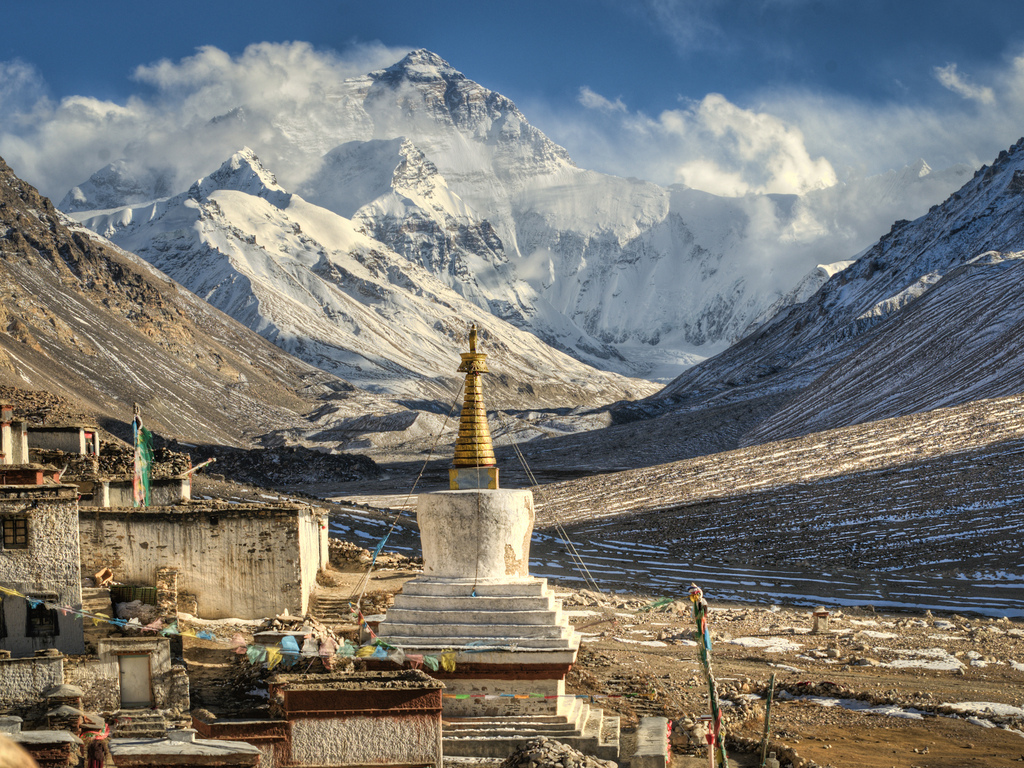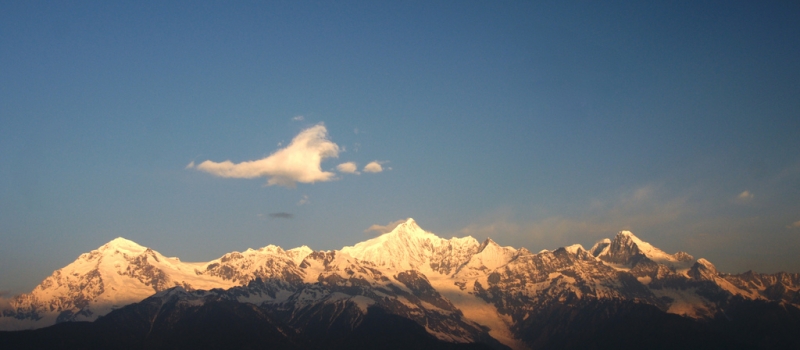
The Third Pole is comprised of the Tibetan Plateau and surrounding mountains and it represents one of the largest masses of ice, snow and permafrost on Earth.
Most people have a general awareness of the importance of the North and South Poles. However far less people are aware that there is also a region that is referred to by many scientists as the ‘Third Pole’.
“People think Tibet is small and unimportant on a global scale. Actually, it is an immense upland, with an area of 2.5 million sq. km and averaging over 4500 meters in elevation. It is also close to 2% of the land surface of the planet.” Download: Tibet’s Environment, DIIR, 2011.pdf
Because this is a time when humanity needs to unite to safeguard the global water cycle and stabilise the climate worldwide, far greater attention needs to be given to restoring and preserving the mixed biodiversity and natural ecosystems within the third pole and adjacent mountain regions. This is important because this biodiversity plays a vital role in the formation and maintenance of ice and snow.
The Third Pole is essential in global climate regulation. We should be devoting more attention to safeguarding these regions and protect the degradation that is rapidly occurring.
“While the glaciers of the Third Pole respond to global climate variations, their presence and interaction with other Third Pole features are critical in the regulation of the global climate system. For example, conditions in the Third Pole affect the atmospheric circulation patterns in Eurasia and thus significantly influence the climate system in the northern hemisphere.” Download: UNESCO, 2011, Third Pole Environment.pdf
After the Arctic and the Antarctic, the Third Pole is Earths’ largest store of glaciers, ice and permafrost and it plays a major role in the reflection of solar radiation globally.

The environmental state of the Tibetan Plateau is relevant to everyone on Earth. As it becomes more degraded, our water and climate becomes more destabilised.
“With an average elevation of 4,500 meters, the Plateau contains over 46,000 glaciers covering an area of 105,000 sq. km, and is the highest, largest, and coldest plateau on Earth” Download: The Impacts of Climate Change on the Tibetan Plateau, DIIR, 2009.pdf
It is of global concern that mountain glaciers and snows are now melting at an alarming rate worldwide and negatively affecting present and future fresh water supplies and climate.
The Third Pole glaciers are melting rapidly and this is having a disastrous knock-on effect globally.
“The Tibetan Plateau is warming about three times the global average. Since the 1950’s, warming in excess of 1oC on the Tibetan side of the Himalayas has contributed to retreat of more than 80% of the glaciers.” Download: Retreat of Tibetan Plateau Glaciers, IGSD, 2010.pdf
Rather than considering these changes to be purely the impact of climate change and thus impossible to remedy, it would be advantageous to look at the connection between them and the massive deforestation of the Tibetan Plateau and Himalayan regions that has occurred within the last 60 years.
Crucial mountain ecosystems have been degraded to a critical point of instability. These need to be replenished while we still have time.
“In the past half-century, 82% of the plateau’s glaciers have retreated. In the past decade, 10% of its permafrost has degraded. As the changes continue, or even accelerate, their effects will resonate far beyond the isolated plateau, changing the water supply for billions of people and altering the atmospheric circulation over half the planet.” Download: The Third Pole, Qiu. J,Nature, 2008.pdf
Mixed mountain region forests make an enormous difference to the making of ice and snow and the mass loss of it on the Tibetan Plateau seriously affects climate and fresh water variables globally.
“With all the changes the Tibetan plateau is undergoing — a warming climate, retreating glaciers, degrading permafrost and alpine eco- systems — what are the implications for the regional and global climate? The first and most important victim could be the Indian monsoon.” Download: The Third Pole, Qiu. J,Nature, 2008.pdf
Tibet is the topmost part of the roof of the world and it affects the entire roof and hence the whole world positively or negatively in regards to water supplies and climate.
